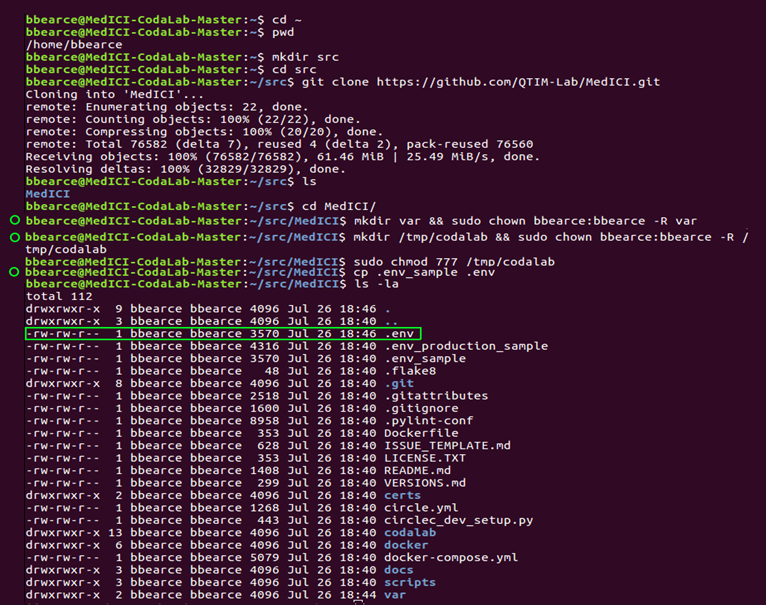 |
Page History
...
Next docker-compose. In the terminal on your new VM check to see if docker-compose is installed. If not which it is not for me then we need to install it. While it seems a ‘sudo apt install docker-compose’ should work, the CodaLab documentation from link “Configure CodaLab from scratch (harder documentation)” says to go here and install from dockers website. The command I’m actually running is this:
| Code Block |
|---|
sudo curl -L "https://github.com/docker/compose/releases/download/1.24.1/docker-compose-$(uname -s)-$(uname -m)" -o /usr/local/bin/docker-compose |
Now we have to change the permissions in /usr/local/bin/docker-compose to use it:
| Code Block |
|---|
sudo chmod +x /usr/local/bin/docker-compose |
.
Now if we run ‘docker-compose’, we should get the options list telling us how to use this command verifying it is installed and we can use it.
...
- Pull the latest changes from the master repo https://github.com/codalab/codalab-competitions into our own repo periodically to make sure we have the latest base code. (repo: https://github.com/QTIM-Lab/MedICI/)...If you need help doing this on your own see forking a repo. Since I’ve already done it, just follow along and clone from the QTIM-Lab/MedICI repo.
- Store our customizations on github so we can clone from this repo for future projects.
Clone the MedICI project. This follows CodaLabs instructions but with our github repo instead. Below is a picture of the commands I’ve executed from “Configure CodaLab from scratch (harder documentation)”. The green circles represent once inside the “src” folder, the changes that are not in the raw CodaLab github repo. This is the start of our customizations.
...

